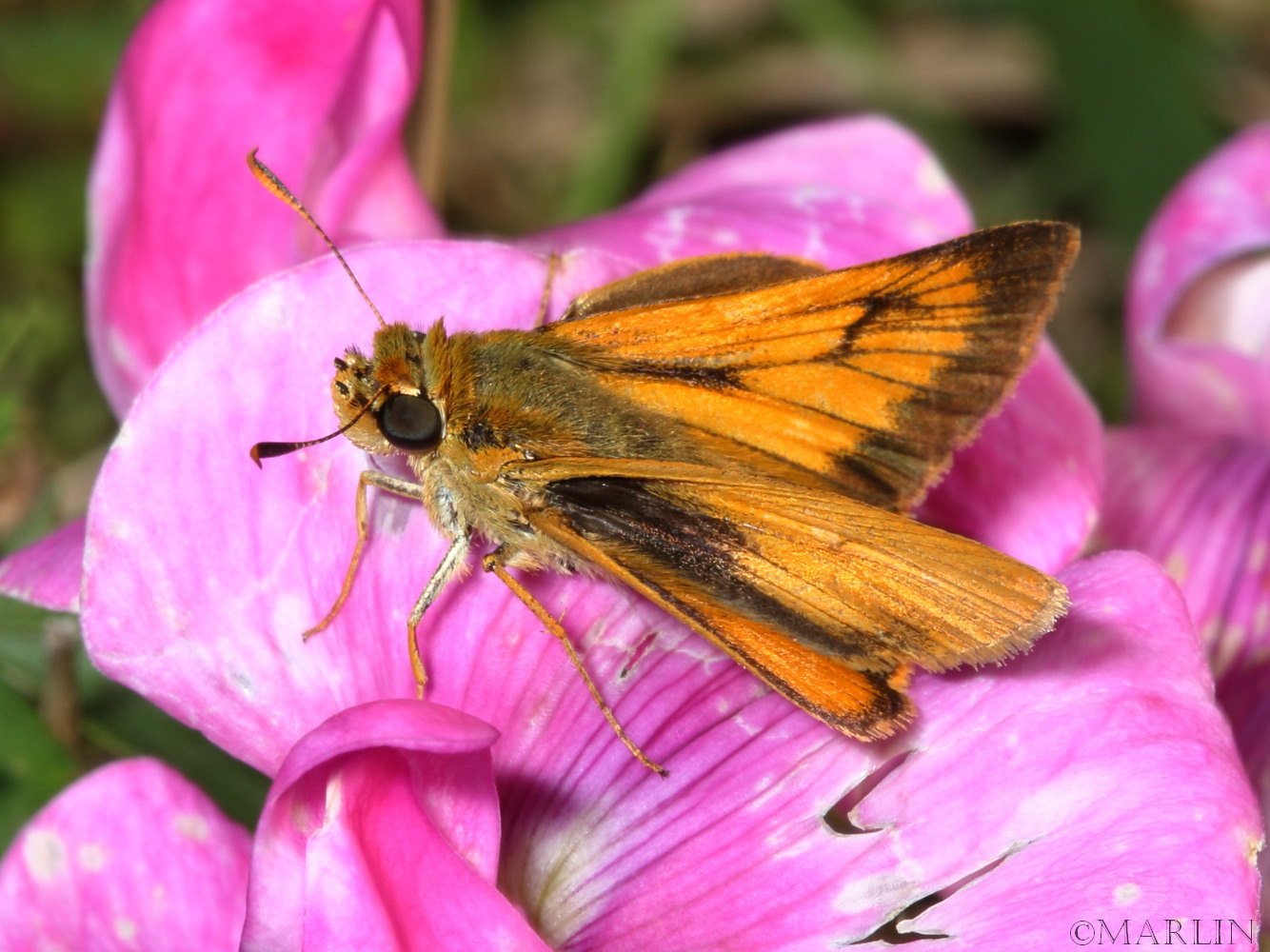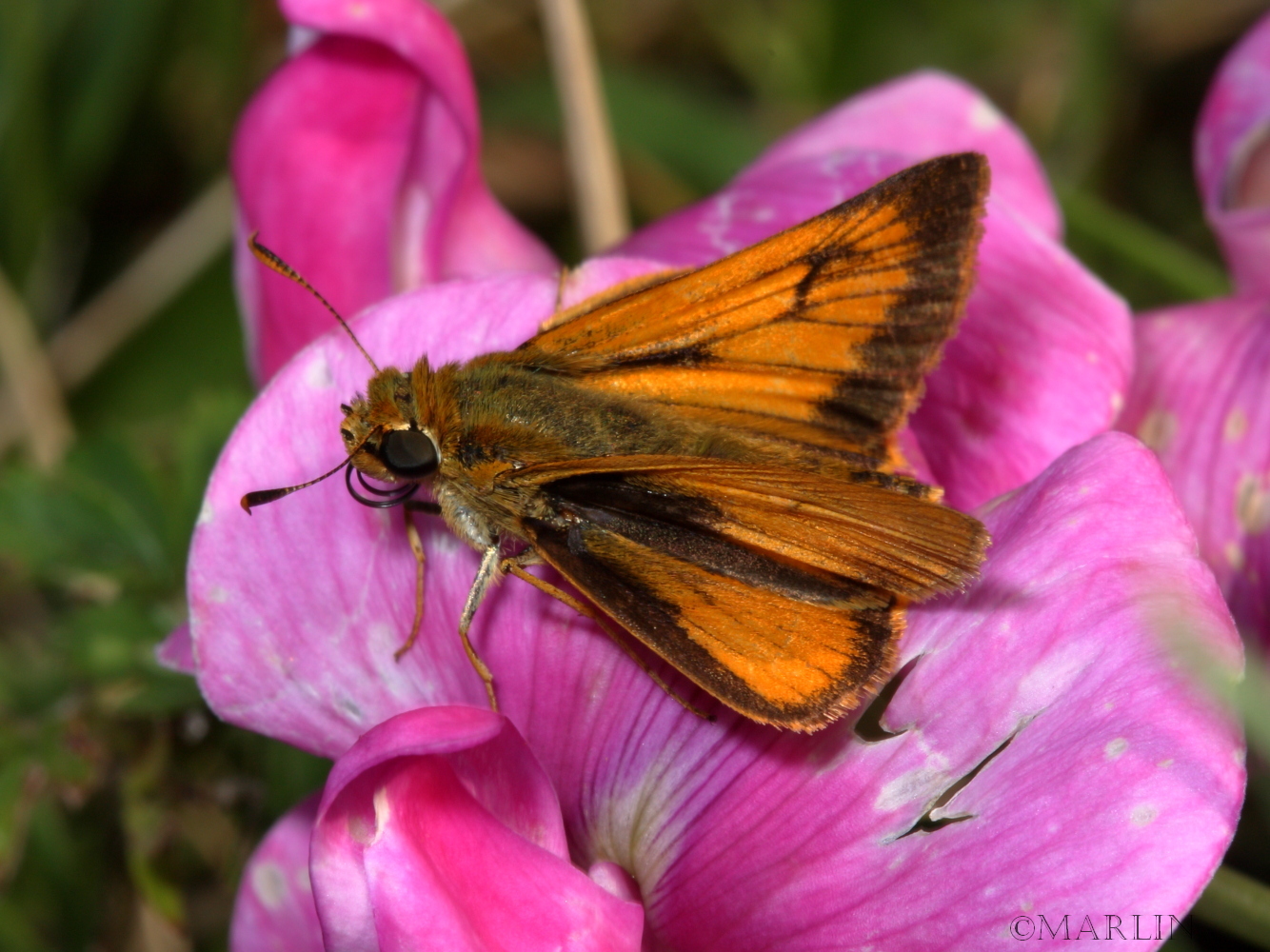Delaware Skipper – Anatrytone logan
Live adult Delaware skipper photographed at Allegheny Nat’l Forest, Pennsylvania, USA. Size: 35mm – 40mm wingspan. Skippers are so called because of their usually erratic and frenetic flight patterns; the Delaware skipper is no exception.
Identification: Upper side of forewing is dark on the basal half and lighter on the outer half, with a distinct orange-brown patch at the end of the cell. Male has a costal fold containing yellow scent scales; female has a patch of scent scales on the 7th abdominal segment.
Life history: Males perch in open areas on low shrubs to wait for females. Eggs are deposited singly on the host plant. Fully-grown caterpillars from the second brood hibernate.
Flight: Two broods from late April to early June and from July to August. Wing span: 1 3/8 – 1 5/8 inches (3/5 – 4.1 cm).
Caterpillar hosts: Usually wild indigo (Baptisia tinctoria), but also others including wild blue indigo (B. australis), lupine (Lupinus perennis), false lupine (Thermopsis villosa), and crown vetch (Coronilla varia).
Adult food: Nectar from pink and white flowers including swamp and common milkweeds, shrub houstonia, mountain mint, marsh fleabane, sweet pepperbush, buttonbush, thistles, and pickerelweed. Habitat: Moist areas including marshes, prairies, fields, roadsides, suburban yards.
Range: Southern Maine west across the Great Lakes states and southern Canada to central Montana; south to Florida, the Gulf states, Texas, northeastern New Mexico, and the Mexican highlands to El Salvador. NatureServe Global Status: G5 – Demonstrably secure globally, it may be quite rare in parts of its range, especially at the periphery.
Butterflies Home | Butterfly Index | Moths | Moths Index | Insects | Spiders


